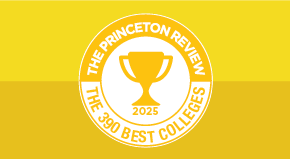
In recent years, there has been a growing emphasis on the concept of inclusive education, which represents a significant shift from traditional educational practices. This shift is aimed at embracing diversity, equity, and accessibility in education. It seeks to accommodate all learners, regardless of their backgrounds, abilities, or differences.
What is Inclusive Education?
Inclusive education is a practice that aims to provide all students, regardless of their abilities or disabilities, with equal access to education. It addresses and responds to the diverse needs of all learners by increasing participation in learning and reducing exclusion within and from education.
Importance of Inclusive Education
Inclusive education is important because it promotes diversity, equity, and social justice. It recognizes that every student is unique and has different learning needs, and it seeks to create an environment that is responsive to those needs. Inclusive education also helps to build a sense of community and belonging among students, which can lead to better academic and social outcomes.
Benefits of Inclusive Education
Inclusive education benefits all students, not just those with disabilities. It promotes a positive learning environment that values diversity and encourages collaboration and teamwork. It also helps to develop empathy and understanding among students, which can lead to more inclusive and accepting communities.
Understanding the Principles of Inclusive Education
Equality and diversity highlights that all students, regardless of their background or abilities, should have equal access to education and be treated with respect and dignity.
Collaboration and partnership promotes educators, parents, and students to work together to create an inclusive learning environment that meets the needs of all learners.
Access and participation are key principles of inclusive education. It aims for all students to be provided with the same educational opportunities and should be encouraged to participate fully in the learning process.
Empowerment and autonomy are also important principles of inclusive education. It means that students should be encouraged to take ownership of their learning and should be empowered to make decisions about their education.

Implementing Effective Inclusive Education Practices
Identifying and addressing barriers to inclusion is an important step in implementing effective inclusive education practices. This includes providing additional support and resources to students with disabilities, as well as modifying the curriculum to meet the needs of all learners.
Creating a supportive and inclusive learning environment is also important. This may involve creating a classroom culture that values diversity and encourages collaboration and teamwork.
Providing appropriate resources and support is essential for implementing effective inclusive education practices. This may involve providing special education teachers, aides, or other support staff with the tools they need to offer more effective instruction. It may also involve providing assistive technology or other accommodations.
Encouraging active participation and engagement is also important. This may involve providing opportunities for peer support and mentoring, or it may involve creating individualized education plans (IEPs) that address the unique needs of each student.

Best Practices for Inclusive Education
Universal Design for Learning (UDL) is another best practice for inclusive education. It involves modifying the curriculum to meet the needs of all learners, including those with disabilities.
Differentiated instruction is another best practice for inclusive education. It involves modifying the curriculum to meet the needs of all learners, including those with disabilities.
Peer support and mentoring is also a best practice for inclusive education. It involves providing opportunities for students to support and mentor each other, which can lead to increased engagement and better academic outcomes.
Individualized Education Plans (IEPs) are also a best practice for inclusive education. They involve creating a personalized plan for each student that addresses their unique needs and learning goals.
Inclusive education is a philosophy that aims to provide all students with equal access to education. It is based on principles of equality, diversity, collaboration, access, participation, empowerment, and autonomy. Implementing effective inclusive education practices involves identifying and addressing barriers to inclusion, creating a supportive and inclusive learning environment, providing appropriate resources and support, and encouraging active participation and engagement. Best practices for inclusive education include Universal Design for Learning, differentiated instruction, peer support and mentoring, and individualized education plans (IEPs). It is important to recognize the importance of inclusive education for all students and to take action to implement effective practices in our schools and communities.
Read More
Explore Colleges For You
Connect with our featured colleges to find schools that both match your interests and are looking for students like you.
Get Started on Athletic Scholarships & Recruiting!
Join athletes who were discovered, recruited & often received scholarships after connecting with NCSA's 42,000 strong network of coaches.
Best 390 Colleges
168,000 students rate everything from their professors to their campus social scene.
Explore Colleges For You
Connect with our featured colleges to find schools that both match your interests and are looking for students like you.
Get Started on Athletic Scholarships & Recruiting!
Join athletes who were discovered, recruited & often received scholarships after connecting with NCSA's 42,000 strong network of coaches.
Best 390 Colleges
168,000 students rate everything from their professors to their campus social scene.
Explore Colleges For You
Connect with our featured colleges to find schools that both match your interests and are looking for students like you.
Get Started on Athletic Scholarships & Recruiting!
Join athletes who were discovered, recruited & often received scholarships after connecting with NCSA's 42,000 strong network of coaches.
Best 390 Colleges
168,000 students rate everything from their professors to their campus social scene.



